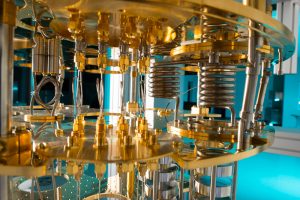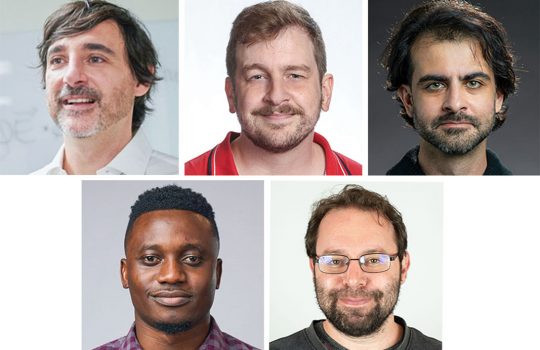
Federal grants will support a number of initiatives by scientists and their collaborators focusing on quantum computing, sensors and communication. Photo: Reidar Hahn
Editor’s note: This is a version of an article that appeared in University of Chicago News.
The U.S. Department of Energy has awarded more than $22 million to scientists at the University of Chicago, Argonne National Laboratory and Fermi National Accelerator Laboratory for quantum science research, spanning the search for dark matter to more powerful computing.
The funding for more than a dozen projects will help scientists explore quantum engineering, which is rapidly becoming reality after decades consigned to theory.
“These are exciting new research programs aimed at creating the foundations of a new technology grounded in the laws of quantum mechanics,” said David Awschalom, the Liew Family Professor at the Institute for Molecular Engineering at the University of Chicago and a scientist at Argonne. “The projects offer a unique opportunity to not only deepen our knowledge of quantum science and what it has to offer across many fields, but also to continue building a framework of collaboration for quantum science between academic institutions and the national laboratories.”
Awschalom heads the Chicago Quantum Exchange — a partnership between all three institutions to foster an emerging Chicago-area ecosystem of quantum research and commercialization.
Among the projects funded:
- At the University of Chicago, Professor Cheng Chin will build a system called a “quantum matter synthesizer,” designed to achieve a dream long held by quantum physicists: to fully control individual atoms in a quantum system. This system will help scientists understand and harness the physics of quantum materials, as well as offer promising ways to process information using quantum technology.
- Argonne scientists will explore how to connect light particles via quantum entanglement, test long-distance entanglement, search for bosonic dark matter — a possible explanation for the mysterious phenomenon known as dark matter—and partner with the National Institute of Standards and Technology to tap quantum to improve scientists’ ability to measure very tiny effects, a field called quantum metrology.
- At Fermilab, scientists will explore applications and theory behind quantum computing, particularly for use in particle physics and accelerators, and use superconducting qubits to search for two other hypothetical particles proposed as explanations for dark matter: axions, extremely tiny particles with no spin, and dark photons, the dark “twins” of regular light particles.
“Scientists have understood the practical potential of quantum physics for decades, but only recently has the technology advanced to the point that we could tap into it,” said Joe Lykken, Fermilab chief research officer and deputy director. “Quantum physics has been Fermilab’s bread and butter for a half-century. With that accumulation of expertise and the technological innovation that comes with it, there’s hardly a place better positioned to explore — as a focused, dedicated program — the ways we can take full advantage of nature’s quantum behavior.”
“This is an opportunity to respond to a major emerging scientific challenge, which the national laboratories are uniquely positioned to do,” said Supratik Guha, a professor in University of Chicago’s Institute for Molecular Engineering and director of the Center for Nanoscale Materials at Argonne. “By delving into the fundamental science and then building devices and systems that exploit quantum mechanics, we expect enormous advantages in many fields.”
More information and the full list of funded quantum projects is available from the Department of Energy.



